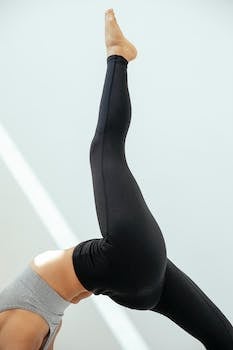

-
Table of Contents
Maintaining Flexibility: Overcoming Age's Challenges.
Introduction
Maintaining flexibility is a challenge that many individuals face as they age. As we grow older, our bodies naturally undergo changes that can lead to a decrease in flexibility. This can make simple tasks, such as bending down or reaching for objects, more difficult and can also increase the risk of injuries. However, with proper attention and effort, it is possible to maintain and even improve flexibility as we age. In this article, we will explore the importance of flexibility, the factors that contribute to its decline with age, and effective strategies for maintaining flexibility throughout the aging process.
The Importance of Stretching Exercises for Maintaining Flexibility
Maintaining Flexibility: A Challenge with Age
As we age, our bodies undergo various changes, and one of the most noticeable is a decrease in flexibility. This decline in flexibility can make everyday tasks more difficult and increase the risk of injury. However, there is a solution to this problem: stretching exercises. Stretching exercises are a crucial component of maintaining flexibility as we age.
Stretching exercises help to improve flexibility by increasing the length of our muscles and tendons. When we stretch, we are essentially elongating these tissues, allowing them to move more freely. This increased flexibility can make it easier to perform daily activities such as bending down to tie our shoes or reaching for objects on high shelves.
Not only do stretching exercises improve flexibility, but they also help to prevent muscle imbalances. As we age, certain muscles may become weaker while others become tighter. This imbalance can lead to poor posture and an increased risk of falls. By incorporating stretching exercises into our daily routine, we can help to correct these imbalances and maintain proper alignment.
In addition to improving flexibility and preventing muscle imbalances, stretching exercises also play a crucial role in injury prevention. As we age, our muscles and tendons become less elastic, making them more prone to injury. By regularly stretching, we can increase the elasticity of these tissues, reducing the risk of strains, sprains, and tears.
It is important to note that there are different types of stretching exercises, and each has its own benefits. Static stretching, for example, involves holding a stretch for a prolonged period. This type of stretching is best done after a workout when the muscles are warm and more pliable. Dynamic stretching, on the other hand, involves moving through a range of motion. This type of stretching is ideal for warming up before physical activity as it helps to increase blood flow to the muscles.
When incorporating stretching exercises into our routine, it is essential to start slowly and gradually increase the intensity and duration of the stretches. It is also important to listen to our bodies and avoid pushing ourselves too hard. Stretching should never be painful, and if we experience any discomfort, we should ease off the stretch.
To get the most out of our stretching exercises, it is recommended to stretch all major muscle groups, including the neck, shoulders, back, hips, and legs. It is also beneficial to incorporate both static and dynamic stretching into our routine to reap the full benefits of flexibility training.
In conclusion, maintaining flexibility as we age is a challenge, but it is not impossible. By incorporating stretching exercises into our daily routine, we can improve flexibility, prevent muscle imbalances, and reduce the risk of injury. Whether it is through static stretching or dynamic stretching, the key is to start slowly, listen to our bodies, and be consistent. With dedication and perseverance, we can maintain our flexibility and continue to enjoy an active and independent lifestyle as we age.
Tips and Techniques for Improving Flexibility as You Age

Maintaining Flexibility: A Challenge with Age
As we age, our bodies undergo various changes, and one of the most noticeable is a decrease in flexibility. This decline in flexibility can make everyday tasks more challenging and increase the risk of injury. However, with the right tips and techniques, it is possible to improve and maintain flexibility as we age.
One of the most effective ways to improve flexibility is through regular stretching exercises. Stretching helps to lengthen the muscles and tendons, increasing their range of motion. It is important to note that stretching should be done in a controlled and gentle manner, without bouncing or jerking movements. This can cause injury and strain on the muscles.
To get started with a stretching routine, it is advisable to warm up the body first. This can be done through light aerobic exercises such as walking or cycling. Once the body is warmed up, static stretches can be performed. These stretches involve holding a position for a certain period of time, usually around 30 seconds. It is important to focus on the major muscle groups, such as the hamstrings, quadriceps, and calves.
In addition to static stretches, dynamic stretches can also be beneficial for improving flexibility. Dynamic stretches involve moving parts of the body through a full range of motion. This can include exercises such as arm circles, leg swings, and trunk rotations. Dynamic stretches help to warm up the muscles and increase blood flow, preparing the body for more intense physical activity.
Another technique for improving flexibility is through yoga or Pilates. These practices focus on stretching and strengthening the body through a series of controlled movements and poses. Yoga and Pilates can help to improve balance, posture, and flexibility. They also provide a sense of relaxation and stress relief, which can be beneficial for overall well-being.
In addition to regular stretching exercises and yoga or Pilates, it is important to incorporate strength training into your fitness routine. Building strength in the muscles helps to support and protect the joints, reducing the risk of injury. Strength training can be done using weights, resistance bands, or bodyweight exercises. It is important to start with lighter weights and gradually increase the intensity as your strength improves.
Maintaining a healthy lifestyle is also crucial for maintaining flexibility as we age. This includes eating a balanced diet, staying hydrated, and getting enough sleep. A healthy lifestyle helps to support the body's overall function and can contribute to improved flexibility.
Lastly, it is important to listen to your body and avoid overexertion. Pushing yourself too hard can lead to injury and setbacks in your flexibility journey. It is important to start slowly and gradually increase the intensity and duration of your exercises. If you experience pain or discomfort during any exercise, it is important to stop and seek medical advice.
In conclusion, maintaining flexibility as we age can be a challenge, but with the right tips and techniques, it is possible to improve and maintain flexibility. Regular stretching exercises, dynamic stretches, yoga or Pilates, strength training, and a healthy lifestyle are all important factors in maintaining flexibility. By incorporating these practices into your daily routine, you can enjoy the benefits of improved flexibility and overall well-being.
Incorporating Yoga and Pilates into Your Routine to Enhance Flexibility
Maintaining flexibility is a challenge that many individuals face as they age. As the body naturally undergoes changes, such as a decrease in muscle mass and joint mobility, it becomes increasingly important to find ways to counteract these effects. One effective method of enhancing flexibility is through the incorporation of yoga and Pilates into your routine.
Yoga and Pilates are both forms of exercise that focus on improving flexibility, strength, and balance. They involve a series of movements and poses that target different muscle groups and promote overall body awareness. By regularly practicing these exercises, individuals can increase their range of motion and maintain flexibility as they age.
One of the key benefits of yoga and Pilates is their ability to stretch and lengthen muscles. Through a combination of deep breathing and controlled movements, these exercises help to release tension and tightness in the body. This can be particularly beneficial for individuals who spend long periods of time sitting or engaging in repetitive motions, as it helps to counteract the negative effects of these activities on flexibility.
In addition to stretching, yoga and Pilates also focus on building strength. Many of the poses and movements require individuals to engage their core muscles, which helps to improve stability and balance. By strengthening the muscles that support the joints, individuals can reduce the risk of injury and improve overall flexibility.
Another advantage of incorporating yoga and Pilates into your routine is the emphasis on body awareness. These exercises encourage individuals to pay attention to their breath, posture, and alignment, which can help to improve overall body awareness. By becoming more in tune with their bodies, individuals can better identify areas of tightness or weakness and work to address them through targeted exercises.
When starting a yoga or Pilates practice, it is important to start slowly and listen to your body. These exercises can be modified to accommodate different fitness levels and abilities, so it is important to find a class or instructor that suits your needs. It is also important to practice regularly in order to see the full benefits of these exercises. Consistency is key when it comes to improving flexibility and maintaining it as you age.
Incorporating yoga and Pilates into your routine can be a valuable tool in maintaining flexibility as you age. These exercises offer a holistic approach to fitness, focusing on both stretching and strengthening the body. By regularly practicing these exercises, individuals can improve their range of motion, reduce the risk of injury, and enhance overall body awareness. So, whether you are a beginner or have been practicing for years, consider adding yoga and Pilates to your routine to enhance your flexibility and overall well-being.
Q&A
1. Why is maintaining flexibility a challenge with age?
As people age, their muscles and joints tend to become stiffer and less elastic, making it harder to maintain flexibility.
2. What are the benefits of maintaining flexibility as you age?
Maintaining flexibility can help improve balance, reduce the risk of injuries, enhance mobility, and promote overall physical well-being.
3. What are some strategies for maintaining flexibility as you age?
Some strategies for maintaining flexibility include regular stretching exercises, engaging in activities like yoga or Pilates, staying active and avoiding a sedentary lifestyle, and seeking professional guidance from physical therapists or trainers.
Conclusion
Maintaining flexibility can be a challenge as individuals age.











